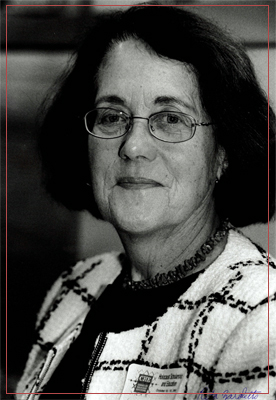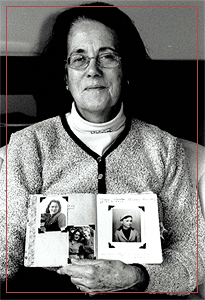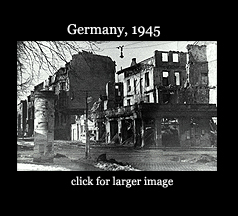Bio of Ursula Lenneberg Pawel
Ursula was born on April 24, 1926 in Dormund, Germany as a daughter
of a ‘mixed marriage’. Her father Otto was Jewish and
her mother Caroline was Christian. Her mother converted to Judiasm
in 1926. In 1925, Otto became a general manager of the Karstadt
department store and her mother became the buyer for children and
ladies’ clothing. They lived in a beautiful apartment and
led a very nice life surrounded by many relatives. Ursula’s
brother Walter was born in September of 1930.
 In
1932, Ursula started school in Aplerbeck. Her life changed drastically
when Hitler came to power in January of 1933 as Chancellor of Germany
and immediately put changes into effect concerning the Jews. Jewish
stores and businesses were boycotted and, by 1935, the Germans enacted
the infamous Nuremberg Laws. These laws made anti-Semitism official
policy and affected 500,000 Jews by depriving them of their German
citizenship and placing all kinds of restrictions on them. One restriction
forbade Jews to marry Gentiles. In 1934, Ursula was forced to leave
her school and entered a Jewish elementary school in Dortmund. She
had to travel a half hour by tram to get to school. Ursula was seven
years when she experienced the hatred of anti-Semitism when two
playmates told her that they could not play with her anymore because
she was a Jew. As the result of the persecutions an boycotts, Ursula
and her family were forced to move to Dusseldorf in 1936, the birth
place of her father and where they had other relatives. Her father
opened another dry goods business and Ursula attended a private
Jewish school. In
1932, Ursula started school in Aplerbeck. Her life changed drastically
when Hitler came to power in January of 1933 as Chancellor of Germany
and immediately put changes into effect concerning the Jews. Jewish
stores and businesses were boycotted and, by 1935, the Germans enacted
the infamous Nuremberg Laws. These laws made anti-Semitism official
policy and affected 500,000 Jews by depriving them of their German
citizenship and placing all kinds of restrictions on them. One restriction
forbade Jews to marry Gentiles. In 1934, Ursula was forced to leave
her school and entered a Jewish elementary school in Dortmund. She
had to travel a half hour by tram to get to school. Ursula was seven
years when she experienced the hatred of anti-Semitism when two
playmates told her that they could not play with her anymore because
she was a Jew. As the result of the persecutions an boycotts, Ursula
and her family were forced to move to Dusseldorf in 1936, the birth
place of her father and where they had other relatives. Her father
opened another dry goods business and Ursula attended a private
Jewish school.
On November 9, 1938, her school and synagogue were burned. Kristallnacht
(Night of the Broken Glass) changed her life even further. Jews
had to adopt Sara and Israel in front of their names; identification
papers were stamped with J for Jew in red and, eventually they were
forced to wear a yellow star. By 1941-42, the State Secret Police
(Gestapo) confiscated everything of value that Jews possessed. Her
mother received an order to appear at the police station and was
told to divorce her Jewish husband. She simply refused.
In July of 1942, Ursula received an order to present herself for
deportation to a labor camp. Her family wanted to go with her. Her
father Otto and brother Walter were able to join her. Each person
brought a suitcase along with clothing that the Germans later confiscated
for their own use. She was sent to Theresienstadt, Czechoslovakia,
a labor camp situated in an old army fortress. This camp was a transit
camp to Auschwitz, a death camp located in Poland. In Terezin, she
became a youth leader of her block L414 and was placed in charge
of teaching them. Her father was a talented carpenter and he managed
to get extra rations for them. Her mother also arrange for her to
receive packages, which she shared with her charges.
In the spring of 1944, Terezin was undergoing a “beautification”
program because they were expecting the Red Cross to come to visit.
A bank was opened and ghetto money was printed. Stores were opened,
gardens were grown, a library was built and they even had a theater.
Children were playing on the pavilion, a choir was singing; only
healthy looking Jews were permitted outside. As soon as the Red
Cross departed, most of the inmates were sent to gas chambers to
die.
In Terezin, the Jews managed to run many cultural events for themselves.
They had many talented artists, musicians, painters and professional
who used their talents to boost the morale of the prisoners.
 On
September 30, 1944, her father and brother were shipped to Auschwitz
and murdered in October of 1944. Ursula ended up in Camp c of Birkenau,
which was part of the Auschwitz complex. The Germans shaved her
head, stripped her of her clothes, and issued a prisoner’s
suit – no underwear, no soap, and no towel or utensils. She
was stripped of all human dignity. Chimneys were spewing out human
ashes; a horrible smell permeated the air. She was eventually selected
to do work and was put with non-Jews. There she met other girls
and made life long friends. On
September 30, 1944, her father and brother were shipped to Auschwitz
and murdered in October of 1944. Ursula ended up in Camp c of Birkenau,
which was part of the Auschwitz complex. The Germans shaved her
head, stripped her of her clothes, and issued a prisoner’s
suit – no underwear, no soap, and no towel or utensils. She
was stripped of all human dignity. Chimneys were spewing out human
ashes; a horrible smell permeated the air. She was eventually selected
to do work and was put with non-Jews. There she met other girls
and made life long friends.
In the beginning of 1945, Ursula was sent to work in an airplane
factory in Silseia. The forman did not like people with glasses
and selected Ursula and three of her friends to be shipped back
to Auschwitz. The transport was mostly filled with sick prisoners.
One soldier put them in the last car and locked the door. Hours
later, soldiers joined Ursula and her friends and gave them food.
At the train station of Merzdorf/Riesengebirge, the soldiers told
them to jump out and follow them. They were handed over to a factory
where prisoners were mostly Polish and Hungarian Jews. This saved
her life.
In May of 1945, they were liberated by the Russians. Ursula and
Bushchi, her good friend from Holland and fellow camp survivor,
made a 500-mile bike trek across Germany to a village near the Dutch
border where her mother was staying. They traveled asking for shelter
and food along the way. Most people responded with kindness.  After
a struggle to leave Germany and, with the help of UNRRA (United
Nations Relief and Rehabilitation Administration), American Joint
Distribution (AJDC) and Hebrew Immigrant Aid Society (HIAS), she
and her mother were able to obtain and affidavit and come to America
in 1947. It was easier to come to America if you were a German citizen
than a citizen of other countries because of the unfilled German
quotas. With the help of AJDC, Ursula and her mother settled in
Boston. Ursula was helped by a very kind and famous radiologist,
Dr Alice Ettinger, Chief Radiologist in Pratt Diagnostic Hospital,
and she became an x-ray technician. After
a struggle to leave Germany and, with the help of UNRRA (United
Nations Relief and Rehabilitation Administration), American Joint
Distribution (AJDC) and Hebrew Immigrant Aid Society (HIAS), she
and her mother were able to obtain and affidavit and come to America
in 1947. It was easier to come to America if you were a German citizen
than a citizen of other countries because of the unfilled German
quotas. With the help of AJDC, Ursula and her mother settled in
Boston. Ursula was helped by a very kind and famous radiologist,
Dr Alice Ettinger, Chief Radiologist in Pratt Diagnostic Hospital,
and she became an x-ray technician.
Ursula met her husband Hans Pawel and they were married in 1948.
Her mother remarried a week later to Siegmund Bruenell. Ursula and
Hans have two children. Her husband Hans passed away in 1999. Ursula
wrote a book about her experience, My Child is Back, published
as part of Holocaust testimonies. She is very actively involved
in telling the story of her teenage years and what happened during
the Holocaust as a lesson for young people. Today Ursula lives in
Bedminster, New Jersey.
SUGGESTED FURTHER READING
Kriskova et al. Secret Magazine of the Boys of Terezin.
Jewish Publication Society. Teenage boys in Terezin publish a literary
magazine. Grade 7 and up.
Ayer, Eleanor, Helen Waterford and Alfons Heck. Parallel Journeys.
Helen and Alfons are born in close vicinity of each other. Helen
ends up in a concentration camp and Alfons joins the Hitler Youth.
Grade 7 and up.
Matas, Carol. Daniel’s Story. Daniel is a fictitious
story based upon a compilation of photographs of children in Germany.
4th – 5th grades. |